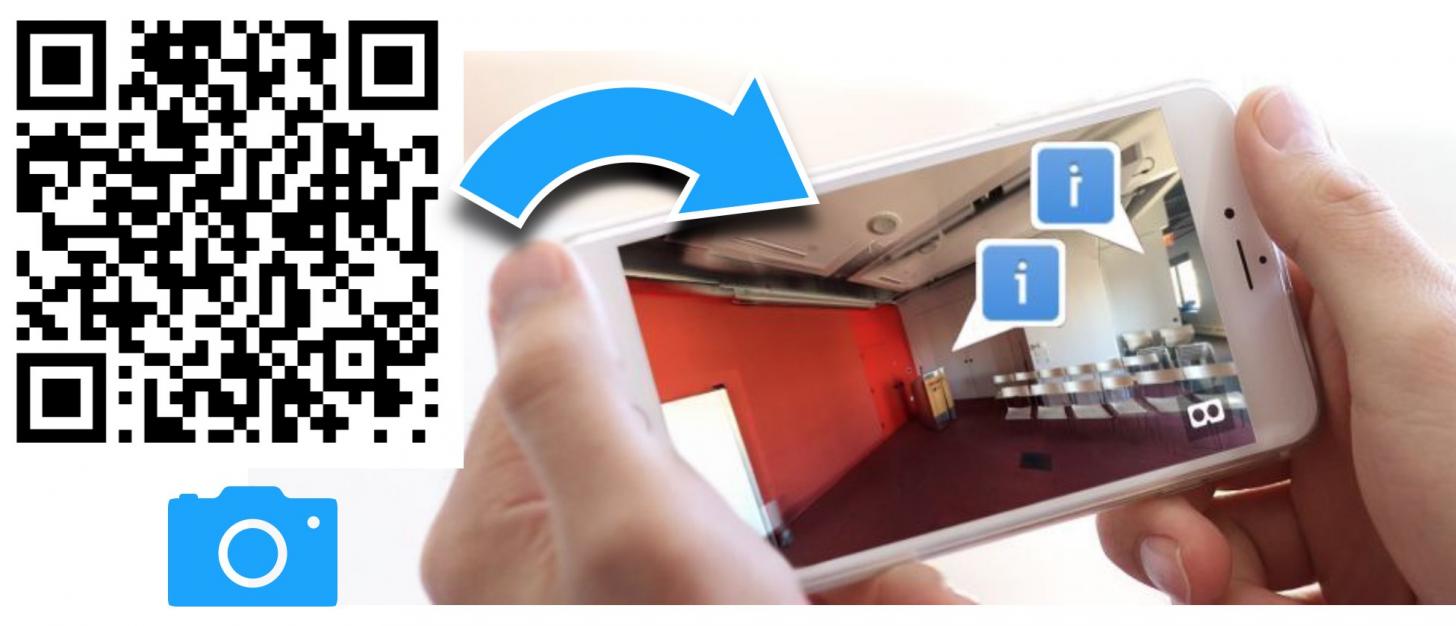25 Apr 2018
iPhone Panorama with Forge Viewer

> Scan this QRCode with your iPhone camera to try now <
Introduction:
I recently had a customer asking - 'how do I create an iPhone panorama with Forge Viewer'. The idea is simple (see video)...
1. open iPhone camera
2. scan QR-Code
3. aim your iPhone up, down to look around

Bonus points - add 3D markers everywhere using the MarkupExt.js.
How does it work ?
There's some quaternion math that ties the onDeviceOrientation events (in Euler degrees) from the iPhone compass/accelerometer, into the Forge Viewer's position/target camera object.
Anyone who's tried this, knows there's a bunch of ugly edge cases due to the portait/landscape modes and iPhone/Android differences.
Now, I know what you are thinking, "why don't you just use the webVR extension?"
True, but I need full-screen panorama, not the split-screen that webVR* offers.
*And the webvr-polyfill, has been 'somewhat' unreliable between versions.
Thankfully, the clever folks at Three.js have already figured out a robust solution already - deviceOrientation.js.
I simply adapted this code to the Three.R71 camera/target model, and 'it just works'TM
To minimize the code further, I re-use the 'gamepad' interface inside the 'first person' tool. I create a custom 'gamepad' component and override the camera-direction with the events from 'deviceOrientation' event.
DEMO
How to use:
Steps:
- Add
<script src="deviceOrientationExt.js"></script>to yourindex.html - Activate 'first person' tool programmatically, like this...
viewer.toolController.activateTool('firstperson')
That's it.
Generate a QR-Code:
Open your index.html page via your iPhone - or better yet, host your webpage publicly, then generate a QR-code and scan it with your iPhone/Android.
You can find an example of how to use the extension on GitHub here: https://github.com/wallabyway/deviceOrientationExt
Feel free to add any issues you find to my Github issues repo.
Source Code:
(function() {
AutodeskNamespace('Autodesk.Viewing.Extensions.GamepadModule');
Autodesk.Viewing.Extensions.GamepadModule = function(viewer) {
window.addEventListener('deviceorientation', e => this.deviceOrientation = e );
this.update = function(camera) {
if (!this.deviceOrientation) return camera;
doe = this.deviceOrientation;
euler.set(deg(doe.beta), deg(doe.alpha), -deg(doe.gamma), 'YXZ'); // 'ZXY' for the device, but 'YXZ' for us
qe.setFromEuler(euler); // orient the device
quaternion.set(Math.sqrt(0.5), 0, 0, Math.sqrt(0.5)); // PI/2 around the x-axis
quaternion.multiply(qe); // orient the device
quaternion.multiply(q1); // camera looks out the back of the device, not the top
quaternion.multiply(q0.setFromAxisAngle(zee, -this.orient)); // adjust for screen orientation
m1.makeRotationFromQuaternion(quaternion);
camera.setRotationFromMatrix(m1);
// adjust camera target
var lookAtDir = new THREE.Vector3(0, 0, -1);
lookAtDir.applyQuaternion(camera.quaternion);
camera.target = camera.position.clone().add(lookAtDir.clone().multiplyScalar(10));
viewer.impl.invalidate(true, true, true);
return camera;
}
const zee = new THREE.Vector3(0, 0, 1);
const deg = THREE.Math.degToRad;
let doe = null;
let qe = new THREE.Quaternion();
let q0 = new THREE.Quaternion();
let q1 = new THREE.Quaternion(-Math.sqrt(0.5), 0, 0, Math.sqrt(0.5)); // - PI/2 around the x-axis
let quaternion = new THREE.Quaternion();
let euler = new THREE.Euler();
var m1 = new THREE.Matrix4();
this.orient = 0;
window.addEventListener('orientationchange', e => this.orient = deg(window.orientation), false);
this.activate = function(toolName) {};
this.deactivate = function() {};
};
})();




